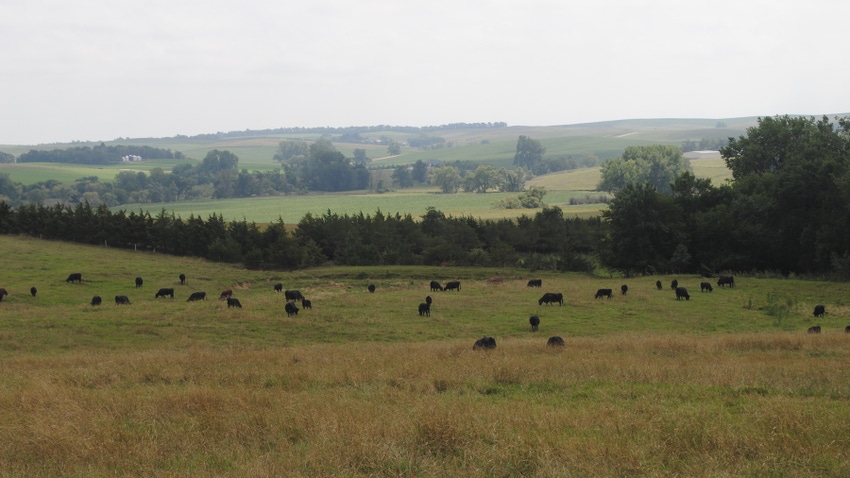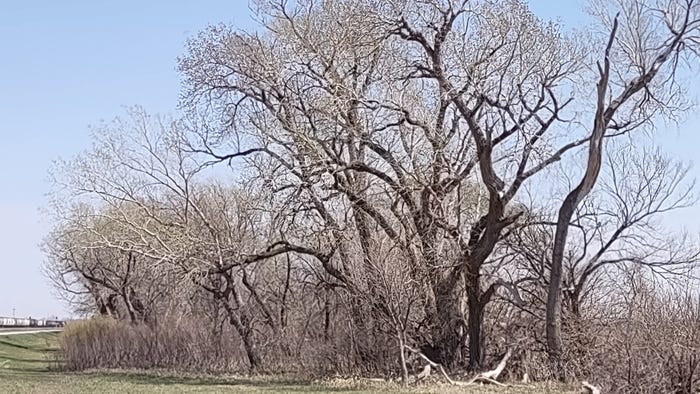
It was one of the most aggressive landscape design experiments in American history. Historians and environmentalists still debate today — 90 years later — if it was a success.
One fact, however, is not up for debate. President Franklin D. Roosevelt’s New Deal Prairie States Forestry Project (PSFP), also known as the shelterbelt program, altered the landscape of the Great Plains states forever.
Over the eight years of Roosevelt’s program, 217 million trees were planted, totaling 18,599 miles of windbreaks, covering 238,212 acres on 30,223 farms in six states.
Nebraska planted the most, with more than 4,000 miles of windbreaks on 51,621 acres and 6,994 farms. This “Great Wall of Trees” was planted by Civilian Conservation Corps or Works Progress Administration workers, with survivability of about 70%.
Many of these windbreaks still exist today, but they look different than they did decades ago. “Windbreaks can take a beating [over time] due to the harsh climate of the Great Plains,” says Bryce Gerlach, Nebraska Forest Service rural forester. “But the harsh climate is the reason that we need windbreaks to survive in the state.”
With the annual celebration of Arbor Day set for April 26, it is a good time to look back 90 years and recall the first steps taken in this grand experiment, and how these early shelterbelts have weathered over time.
How it began
Roosevelt noted the drought devastation of the Dust Bowl that he witnessed firsthand during his campaign swing across nine states in 1932 during one of his famous fireside chats with the nation. “I shall never forget the fields of wheat,” he said, “so blasted by heat that they cannot be harvested.”
The president established the shelterbelt planting campaign to combat soil and wind erosion from drought with an executive order on July 21, 1934. The Norris-Doxey Cooperative Farm Forestry Act passed by Congress in 1937 formally authorized Roosevelt’s dream to plant a wide swath of windbreaks across the driest regions of the Great Plains.
His motives were twofold. The windbreaks would protect fragile topsoil, and the planting projects would put people to work and help the economy. The first tree in the program was an Austrian pine planted on the H.E. Curtis farm near Magnum, Okla. The first shelterbelt trees in Nebraska were planted in Red Willow County near McCook on April 4, 1935.
Another early PSFP shelterbelt went in April 23, 1935, at the John Schleusener farm, a mile and a half north of Orchard, Neb. This windbreak consisted of 14 rows of trees, according to the Antelope County Historical Society, including cottonwood, Chinese elm, laurel leaf willow, honey locust and western juniper.

NEW DEAL REMNANT: Motorists can quickly identify old PSFP windbreaks scattered across the Great Plains region. Although they may seem unsightly to some, such as this windbreak along Highway 30 in Hall County, Neb., they are still doing their job and could be renovated with additional plantings and a little care.
The first PSFP shelterbelt in neighboring South Dakota was planted on the Ed Casey farm near Mitchell on April 12, 1935. Although the planting was set up to be a public relations field event, it was called off because of rain after a few lonely seedlings were planted.
This was not necessarily an original idea. European settlers on the Plains brought their tree-planting methods with them to their new homesteads after the Civil War. For instance, as early as 1885, a tree-planting project took place at South Dakota State University at Brookings, where students planted trees for shelterbelts on the campus during their spring term.
When South Dakota became a state and the first legislature convened in Pierre in 1890, they passed a shelterbelt law that provided for a payment of $2 per acre for planting trees over a 10-year period east and west across quarter section lines. PSFP was just a continuation of an ongoing tree-planting movement.
Still around
According to a mapping project through the National Agroforestry Center in 2010, about 79% of the original sites had at least partial windbreaks remaining in Nebraska. Over time, land changed hands, and many of the windbreaks were torn out to make room for crops. That was the case with the Schleusener windbreak. Although it was honored by a state historical marker, the early shelterbelt was still removed in the spring of 2017 after the land had been sold.
Thanks to a 2016 digital cultural heritage and rural landscapes mapping project, researchers have been able to identify many of the existing PSFP shelterbelts and even estimate their condition.
According to the study, 11 counties in Nebraska still have between 101 and 521 shelterbelts planted through PSFP, with most of those centered in the northeast and central portions of the state, along with Morrill County in the Panhandle. On the other end of the spectrum, 16 counties have between five and 20 still existing, with several counties left without a single shelterbelt from that program.
“You need to remember that these PSFP windbreaks were planted with different planting and design standards than we have today,” says Pam Bergstrom, National Technical Assistance agroforester. “These trees within the windbreaks were planted close to each other within the rows and between the rows — more quantity and not quality — compared to windbreaks designed, implemented and installed today.”
Although these old windbreaks may seem unsightly to some, they are still serving their purpose, Gerlach says.
“A dead or dying windbreak still manipulates airflow and provides benefits for snow catch, livestock protection and more,” he adds. “We are way too quick at bulldozing the entire windbreak because it is ‘ugly.’ This is an opportunity to start interplanting new trees or replace one row at a time instead of starting from scratch. Fallen down branches and trees make great protection to plant new, baby trees and give them protection from livestock and deer.”
Learn more at cdrh.unl.edu.
About the Author(s)
You May Also Like






